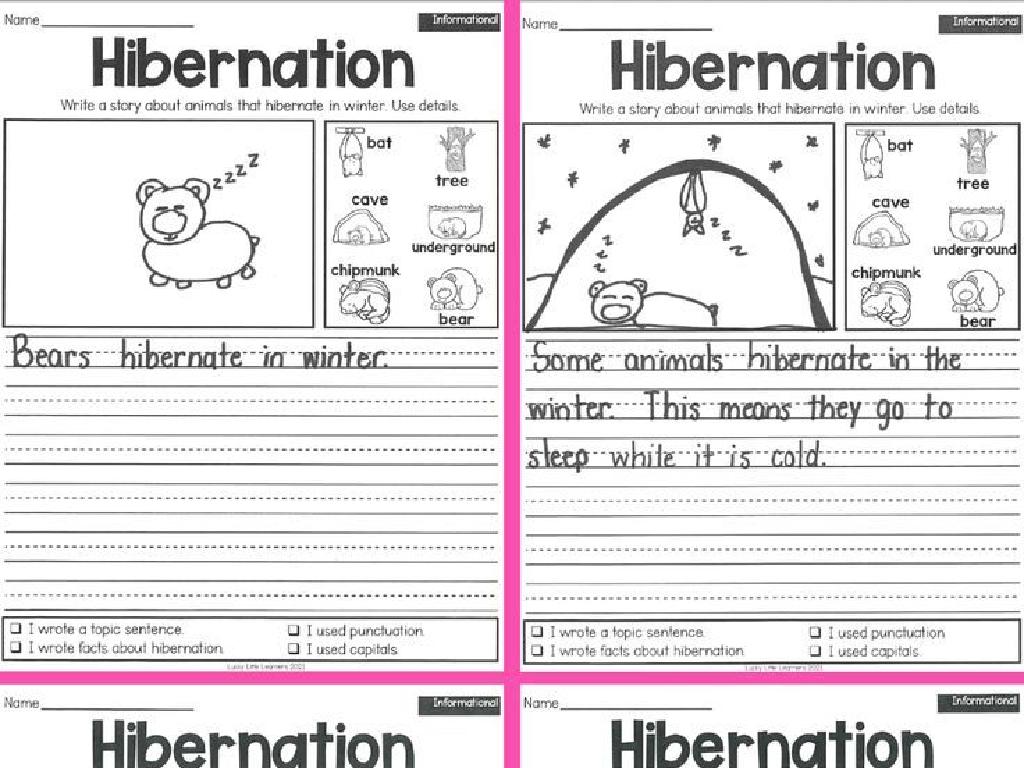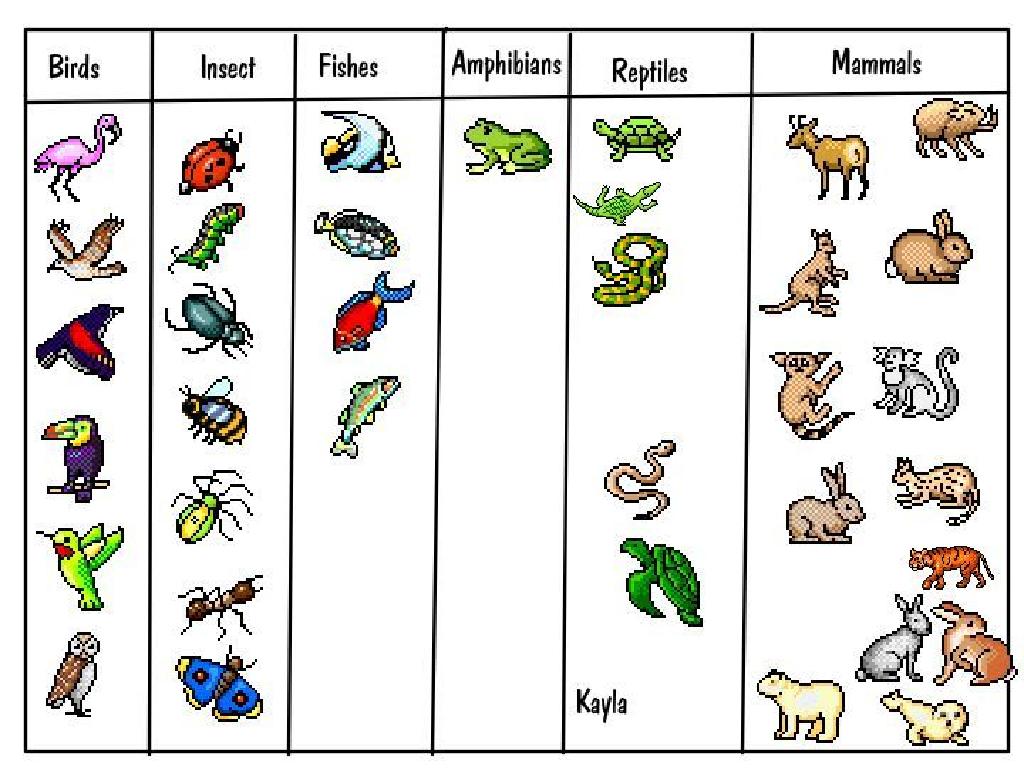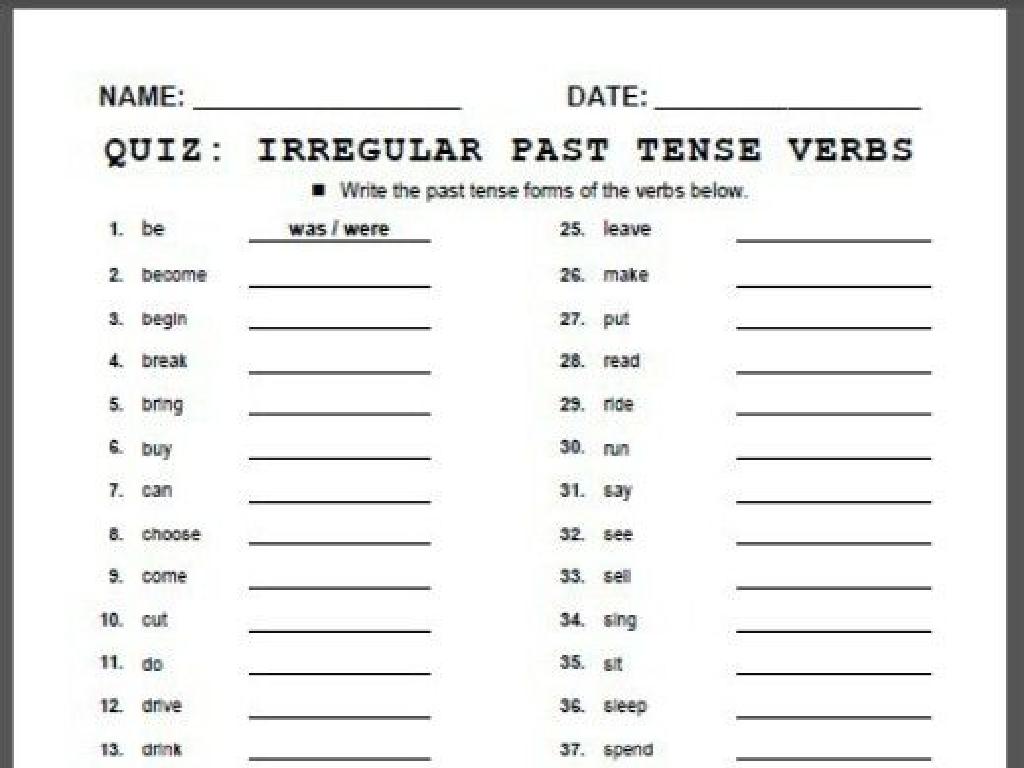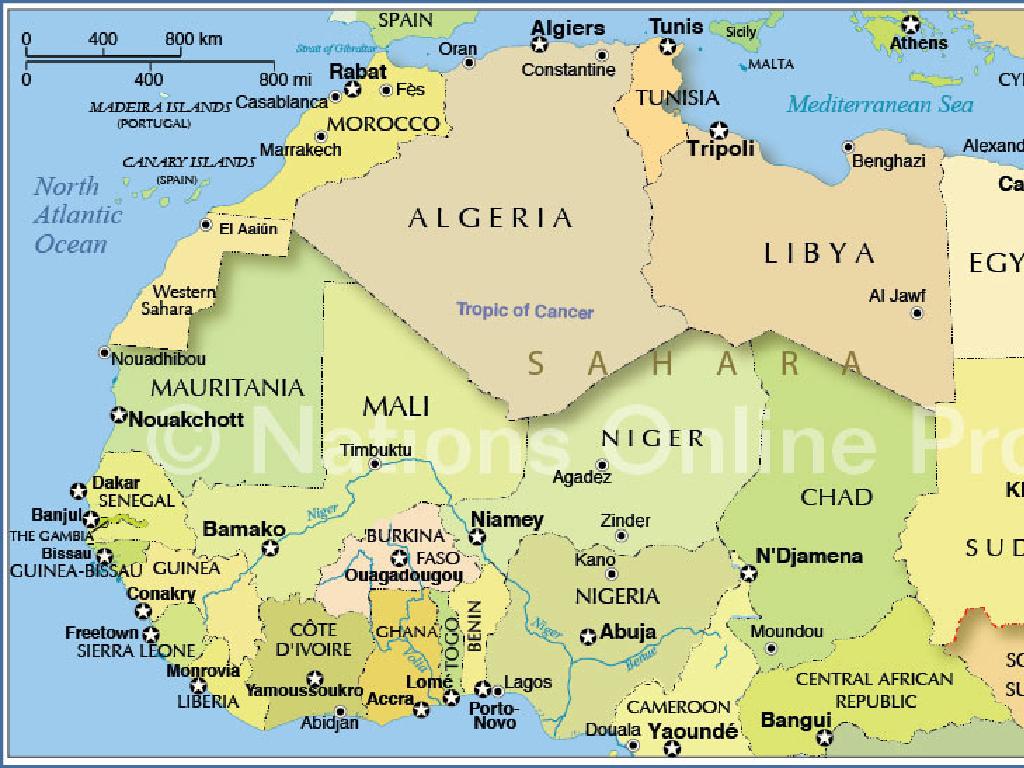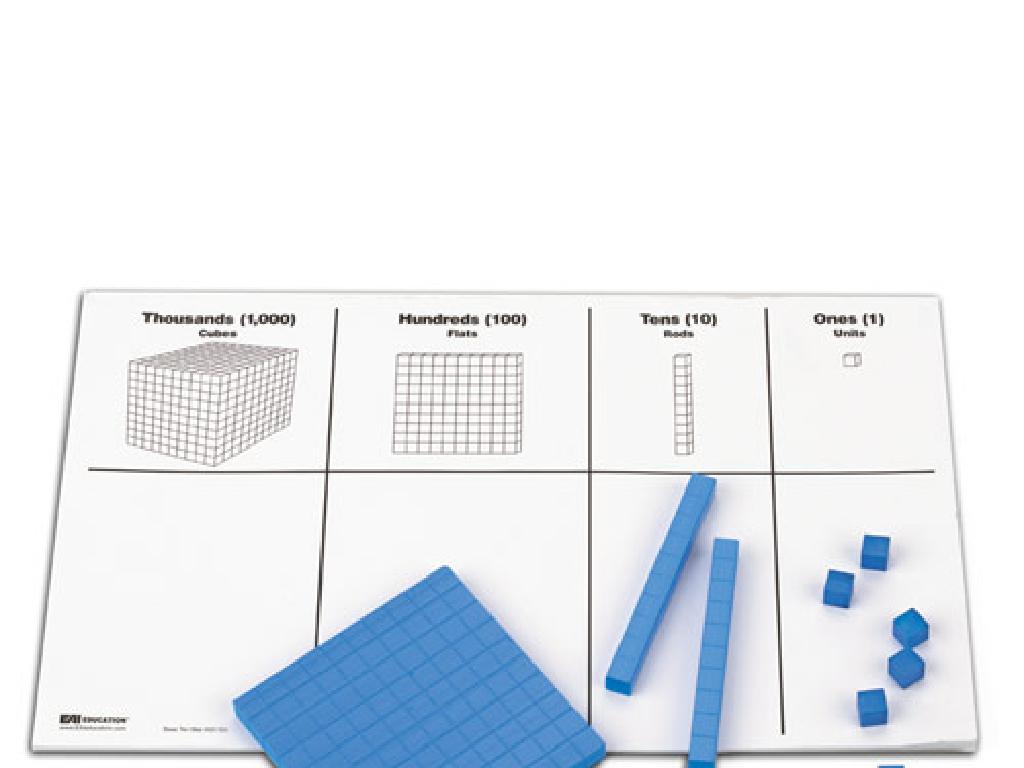Multiply A Decimal By A Multi-Digit Whole Number
Subject: Math
Grade: Fifth grade
Topic: Multiply Decimals By Whole Numbers
Please LOG IN to download the presentation. Access is available to registered users only.
View More Content
Multiplying Decimals by Whole Numbers
– Grasp decimals and whole numbers
– Decimals represent parts of a whole, like $0.75 is 75 cents.
– Importance of decimal multiplication
– It’s key for math skills in shopping, banking, and measurements.
– Real-world uses of multiplying decimals
– Used in money calculations, cooking, and science measurements.
– Practice with examples
– Let’s multiply 0.5 (half dollar) by 4 to find the total amount.
|
This slide introduces the concept of multiplying decimals by whole numbers, which is a fundamental skill in fifth-grade mathematics. Start by ensuring students understand what decimals and whole numbers represent, using money as a relatable example. Emphasize the importance of this skill in everyday life, such as calculating total costs, interest in banking, or measurements in cooking and science. Provide real-life scenarios where these calculations are necessary. Encourage students to practice with examples and understand the process, preparing them for more complex math concepts. The example provided can be used to show the practical application of multiplying a half dollar (0.5) by a quantity (4) to find the total amount.
Multiplying Decimals: A Review
– Recap: Multiplying whole numbers
– Remember how we multiply numbers like 3 x 4?
– Place value’s role in multiplication
– Each digit has a position value that is ten times the value to its right.
– Using times tables effectively
– Times tables help us quickly multiply without counting each time.
– Practice with decimal multiplication
– Let’s try 0.5 x 6 using what we know from times tables.
|
Begin with a quick review of how to multiply whole numbers, as this is the foundation for multiplying decimals. Emphasize the importance of place value, which helps us understand where to put the decimal point in the answer. Remind students how times tables can be a quick reference tool for multiplication, saving time and reducing errors. Then, transition to applying these concepts to multiplying a decimal by a multi-digit whole number. Provide examples and encourage students to solve them using the methods discussed. This will prepare them for more complex problems involving decimal multiplication.
Understanding Decimal Places
– Define Decimal Place
– A decimal place shows a fraction of a whole number, like cents in a dollar.
– Compare to Whole Number Places
– Just as ones, tens, hundreds are places in whole numbers, decimals have tenths, hundredths, etc.
– Counting Decimal Places
– Count places after the decimal point, e.g., 0.75 has two decimal places.
– Significance in Multiplication
|
This slide introduces the concept of decimal places, which is fundamental to understanding how to multiply decimals by whole numbers. Start by defining what a decimal place is and how it represents fractions of a whole. Draw parallels between the place value system of whole numbers and decimal numbers to help students grasp the concept. Practice counting decimal places in various numbers to ensure students can identify them correctly. Emphasize the importance of decimal places when multiplying, as they affect the position of the decimal in the final answer. Use visual aids like place value charts to enhance understanding.
Multiplying Decimals by Whole Numbers
– Ignore the decimal point at first
– Multiply as with whole numbers
– Count decimal places in the question
– If the decimal has 2 places, the answer will too
– Place the decimal in the answer
– Ensure the decimal in the product matches the total places from the decimal number
|
When teaching students to multiply a decimal by a multi-digit whole number, start by having them ignore the decimal point and multiply the numbers as if they were both whole numbers. This simplifies the process and focuses on their multiplication skills. After finding the product, guide them to count the number of decimal places in the original decimal number. This count will determine where to place the decimal in their answer. For example, if the original decimal has two places, the product must also have two decimal places. This step is crucial for placing the decimal correctly in the final answer. Practice with several examples and ensure students understand why the decimal is placed where it is in the product.
Multiplying Decimals by Whole Numbers
– Example: 0.5 x 4
– Multiply as if there are no decimals, then count decimal places
– Step-by-step solution
– Start with 5 x 4 = 20, then place the decimal for one place: 2.0
– Decimal point placement
– The decimal point in the product is placed after one digit from the right
– Practice with examples
|
This slide introduces students to the concept of multiplying a decimal by a multi-digit whole number. Begin with a simple example, such as 0.5 x 4, to demonstrate the process. Emphasize that they should multiply as if there were no decimal points and then adjust the decimal place in the final answer. It’s crucial for students to understand that the number of decimal places in the product is equal to the total number of decimal places in the factors. Provide additional examples for practice and ensure that students are comfortable with the concept of decimal placement before moving on to more complex problems.
Complex Decimal Multiplication: 3.27 x 15
– Break down the multiplication steps
– Divide the problem: 3.27 into 327 and 15 stays the same
– Multiply as if there’s no decimal
– Pretend 3.27 is 327 and multiply by 15
– Count total decimal places
– 3.27 has two decimal places, so our product needs two as well
– Place the decimal in the answer
– After multiplication, place the decimal before 2 digits from the right
|
This slide guides students through the process of multiplying a decimal by a multi-digit whole number. Start by simplifying the problem: treat 3.27 as 327 and multiply by 15. Next, ensure students understand that the decimal point doesn’t change the basic multiplication steps. After finding the product, remind them to count the total number of decimal places in the original decimal number (two in 3.27). Finally, place the decimal point in the product so that it has the same number of decimal places. For example, 327 x 15 equals 4905, and placing the decimal point two places from the right gives us 49.05. Encourage students to practice with different problems to gain confidence.
Let’s Practice Multiplying Decimals!
– Solve problems as a class
– Apply learned multiplication steps
– Use the steps: align numbers, ignore decimal, multiply, then place decimal
– Share solutions with peers
– Explain your answer to classmates
– Discuss any challenges faced
– Talk about the hard parts and learn from them
|
This slide is designed for a collaborative class activity where students will apply the steps they’ve learned for multiplying decimals by multi-digit whole numbers. Start by solving a few problems together as a class to demonstrate the process. Encourage students to apply the steps independently on new problems. Afterward, have them share their solutions with the class and discuss any challenges they encountered. This will help them learn from each other and clarify any misunderstandings. Possible activities include peer-teaching, group problem-solving, or a ‘gallery walk’ where students display their work and discuss it with classmates. The goal is to reinforce their understanding through practice and peer interaction.
Class Activity: Decimal Multiplication Game
– Pair up and solve problems together
– Use dice or cards for random numbers
– Race to place the decimal correctly
– Is the decimal in the right spot? Check each other’s work!
– Discuss strategies with your partner
– Share tips on how to multiply decimals accurately
|
This interactive class activity is designed to help students practice multiplying decimals by multi-digit whole numbers in a fun and engaging way. Students will pair up, which encourages collaboration and peer learning. Using dice or number cards to generate numbers for the problems ensures a variety of practice and prevents repetition. The race element adds excitement and helps students focus on the importance of decimal placement in the final product. After the activity, facilitate a discussion where students can share their strategies and learn from each other. Possible activities for different pairs could include creating word problems for their partner to solve, using manipulatives to represent decimal multiplication, or drawing models to visualize the multiplication process.
Wrapping Up: Decimals & Multiplication
– Review of decimal multiplication
– Practice leads to mastery
Just like sports or music, math gets easier the more you do it!
– Homework: Decimal worksheet
Complete the worksheet to practice multiplying decimals by whole numbers.
– Keep practicing at home!
|
As we conclude today’s lesson on multiplying decimals by multi-digit whole numbers, it’s crucial to emphasize the importance of practice in mastering this skill. The homework assignment is a worksheet that includes a variety of decimal multiplication problems to reinforce today’s learning. Encourage students to attempt the worksheet independently, reminding them that making mistakes is a part of the learning process. Offer support for students who may need extra help and encourage them to bring questions to the next class. The goal is for students to become comfortable with the process and to recognize patterns in decimal multiplication.

